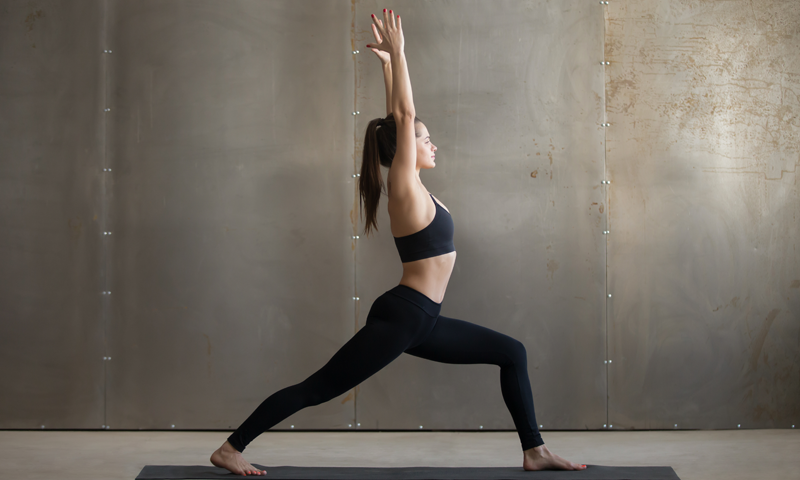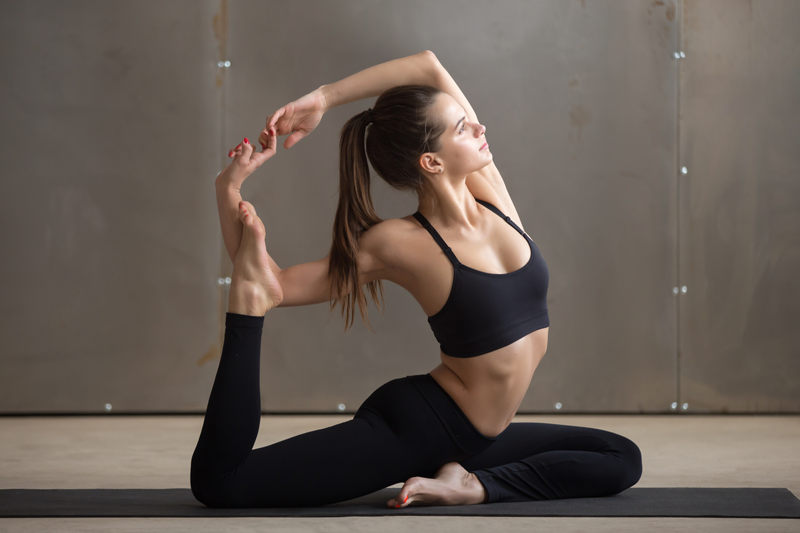
How to Reduce Abdominal Fat with Yoga
10th November 2017
What Are Asanas in Yoga?
17th November 2017Why is Yoga So Successful?

Today, the traditional practice of yoga is more popular than ever. Bringing with it numerous benefits to both the body and mind, it’s no surprise that sessions of the holistic practice can be found worldwide. In this article, we explore the success of yoga in more detail, discussing some of the many successes that can be achieved through regular practice.
Improves flexibility
One of the most obvious successes is an improved level of flexibility. When you first begin, it’s likely that you may not even be able to touch your toes. With continued practice, you’ll quickly notice that poses you struggled with at the start are becoming easier. You’ll also begin to notice that any aches, pains, and discomfort you were feeling prior to beginning will start to gradually disappear. When spending regular time on your yoga mat, your muscles will become less tight, often leading to less strain being placed on your joints – this contributes to the reduction in pain. To allow the muscles to stretch sufficiently, it’s important to wear flexible clothing. For a good-quality pair of yoga pants, we recommend the Ana Heart, Moss Ballet Leggings.
Betters Posture
Learning how to maintain a correct posture can do wonders for your health. When your head is correctly aligned above your spine, it takes less work for your neck and back muscles to support it. If your head is misaligned, however, you can begin to strain those muscles. Maintaining a correct posture will prevent aches, pains, and more serious damage to the back and neck. Continuous slumping can eventually lead to degenerative arthritis of the spine, so learning how to perfect your posture can work wonders for your health!
Betters Bone Health
Weight-bearing exercises are renowned for strengthening the bones. When practising yoga, you will find that many of the postures require you to lift your own weight; this can lead to the strengthening of various bones around the body, in addition to warding off osteoporosis. Downward-facing-dog is great for strengthening the arm bones, an area most at risk of osteoporosis fractures. In addition to strengthening the bones through weight-bearing postures, yoga can help lower levels of cortisol. Not only will this make you feel more relaxed, but it can also help to keep calcium in the bones. As a child, the bones continuously absorb calcium, making it easy for children to remain topped up on the vital nutrient. When we reach adulthood, however, the bones no longer absorb calcium sufficiently. With this in mind, it’s important to keep calcium within the bones to prevent breaks and potential bone diseases.
Increases Blood Flow
If you’re someone that suffers from cold hands and feet, practising yoga could be of enormous benefit. Helping to get your blood flowing, yoga helps you to stay warm – even in the cold, winter months! Addi-tionally, the practice helps to get more oxygen to your cells, helping them to function to the best of their ability. Twisted poses are thought to be especially helpful for improving blood flow. When the body is performing the twist, a build-up of blood is caused within the body; as the twist is released, the blood is flushed through your system supplying your organs with fresh, oxygenated blood. Postures such as Headstand and Shoulderstand help venous blood to flow from the legs back to the heart. Once at the heart, the blood can be freshly oxygenated and pumped back around the body. Additionally, certain postures increase levels of haemoglobin and red blood cells.

Lowers Resting Heart Rate
Practicing yoga, especially of the aerobic kind, will get your heart rate up. Not only can this lower your risk of a heart attack, but it can also help to relieve anxiety and depression. If you prefer gentler poses – don’t worry! Studies have shown that even the postures that don’t get your heart racing can improve cardiovascular health. With numerous benefits including a lowered resting heart rate and increased endurance, it seems that all forms of yoga are great for the heart.
Allows Stress-Free Happiness
Studies have shown that yoga can genuinely make you happier. Great for those suffering from depression, the practising can significantly increase serotonin levels in the body. Better still, it can lead to a decrease in levels of the stress hormone, cortisol, too! Like any form of exercise, practising postures regularly can release happy hormones (endorphins) into the body. Making time to practice for just 20 minutes each morning can leave you feeling happy and stress-free, ready to take on the rest of the day with a smile.
Improves Focus
Studies have shown that regular yoga practice can improve reaction time, coordination, memory, and even your IQ level! Helping you to concentrate on the present, meditation can be great for keeping you focused, too. Meditating for just a few minutes each day can help you to become less distracted by your thoughts; in turn, this will allow you to remain focused throughout the day, ready to solve any problems that come your way.
Allows a Deeper Sleep
In addition to stimulating the brain, yoga can also provide relief from the busyness of modern life. Certain asanas and various forms of meditation allow your body and mind some well-deserved downtime – something that is incredibly beneficial for the nervous system as well as your mental health. When in a relaxed state, your body is able to sleeper deeper, too. This means that you’ll be less tired and full of energy the next day.
Builds Long Lasting Relationships
Great for practising with either a friend or your partner, couples yoga can benefit your relationship. Above all else, the practising brings with it an increased level of trust between the two individuals, blessing them with the knowledge that the other will always be there to support them. Regularly practising couples postures builds a sense of unity, knowing that each asana cannot be completed without the complete focus of both parties.
Whether you’re hoping to lower your risk long-term health issues or begin to build life-long relationships, yoga can bring with it great success in all areas of life. With the array of positive benefits it brings to both the body and mind, it’s no surprise that individuals are using the alternative therapy all over the world.

